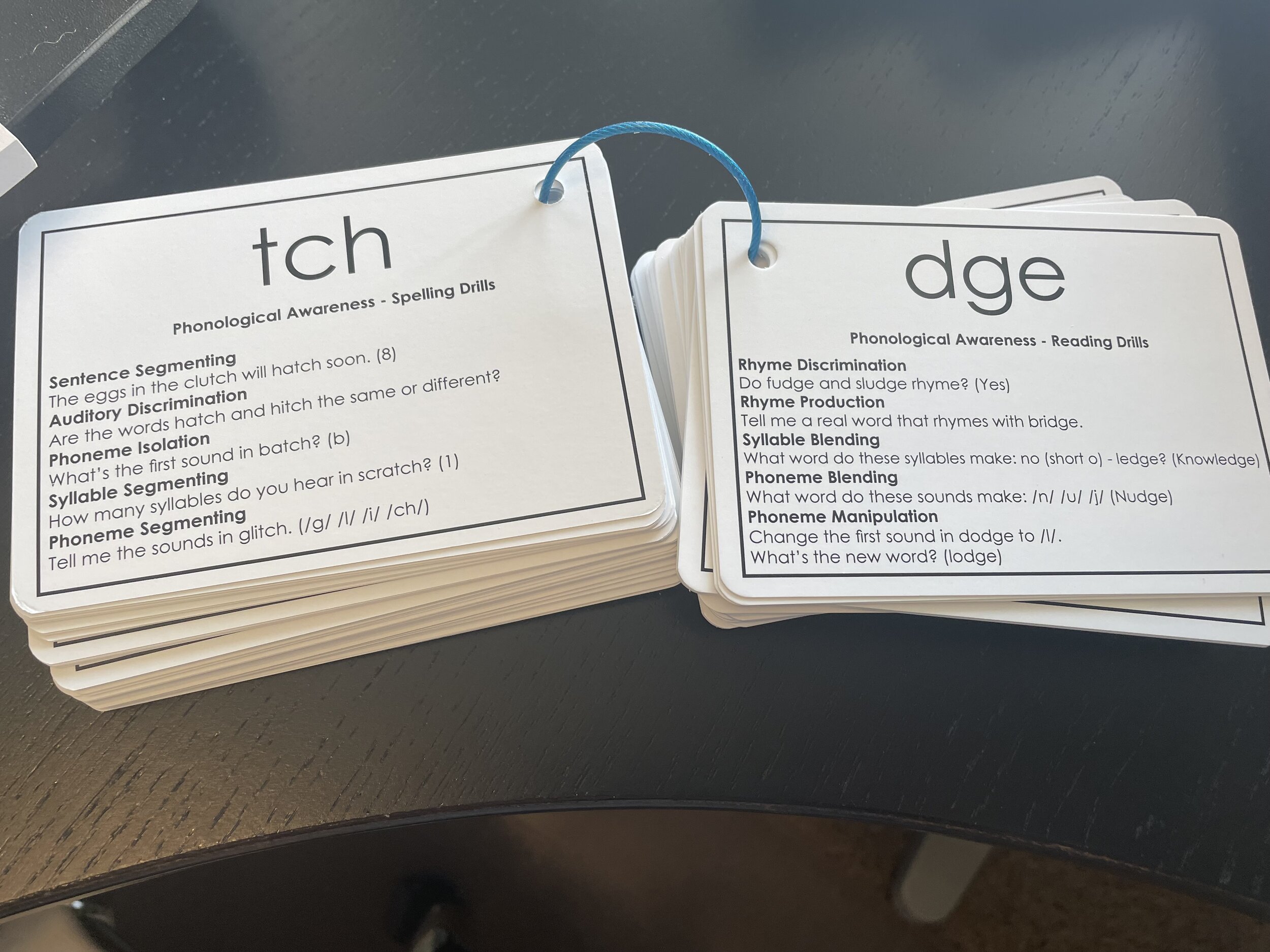How To Fit Phonological Awareness into Your Reading & Writing Lessons
It is no secret that phonological awareness skills are a key component to reading and spelling, but for a long time, it felt like the way to effectively fit these drills into our lessons WAS a secret! After a while of looking at the data (and some trial/error!), we found a way that worked for us and want to share it with you!
First things first -
What is phonological awareness?
We’re so glad you asked, at the simplest level - it’s understanding the sounds of our language. It includes skills that we need to break words up into individual sounds and blend sounds together in order to “sound words out.” You can read all about phonological awareness >>here.<<
How do I fit phonological awareness into my lessons?
We start by aligning our PA drills with our target phonogram.
One of the best ways we have found to help fit our PA instruction into our lessons is to align the drills with our key phonogram. For example, if we are working on the ‘ou’ vowel team, we will include key ‘ou’ words in the drill. We may ask a sentence segmenting question like “Are the words soup and scoop the same or different?” or “How many syllables do you hear in the word bounty?”
This way, the questions we ask in this portion of the lesson feel cohesive and in alignment with the lesson, instead of an extra component that we need to add in.
This made all of the difference when we were looking for ways to make lessons feel cohesive and for all of our lesson components to not only fit in our allotted time but to work together to get students the biggest possible gains. Aligning all of our lesson components allowed students to see how everything they were learning came together a lot better than when everything felt disjointed.
If you are using a program that gives you phonics-based support and are looking for phonological awareness activities you can use to align with what you have, we are excited to let you know that we will be releasing our PA drill cards next week! You will be able to find them >>here!<<
These are split up by sound and phonogram pattern so that you can seamlessly add them to your lessons!
The next thing we do to fit Phonological Awareness into our lessons is to split the skills into two groups.
Before we begin the decoding section of our lesson, we will run through a 5-part PA drill that includes skills like rhyming, syllable & phoneme blending, and phoneme manipulation. As these skills help prime the student’s brain for reading, we always take a minute before decoding to fit this drill in here!
Then, before we work on spelling, we will complete a 5-part spelling drill that includes sentence, syllable, and phoneme segmenting, auditory discrimination, and sound isolation. These skills will help prime the student’s brain for spelling and sentence writing.
By completing these every week, at the same point in the lesson, we are able to seamlessly incorporate them into our bigger-picture reading and spelling instruction.
To see this 10-part drill in action, check out the video below!
For more information about effective PA instruction and how to align your activities with the Science of Reading, grab the Science of Reading Blueprint by clicking below.




